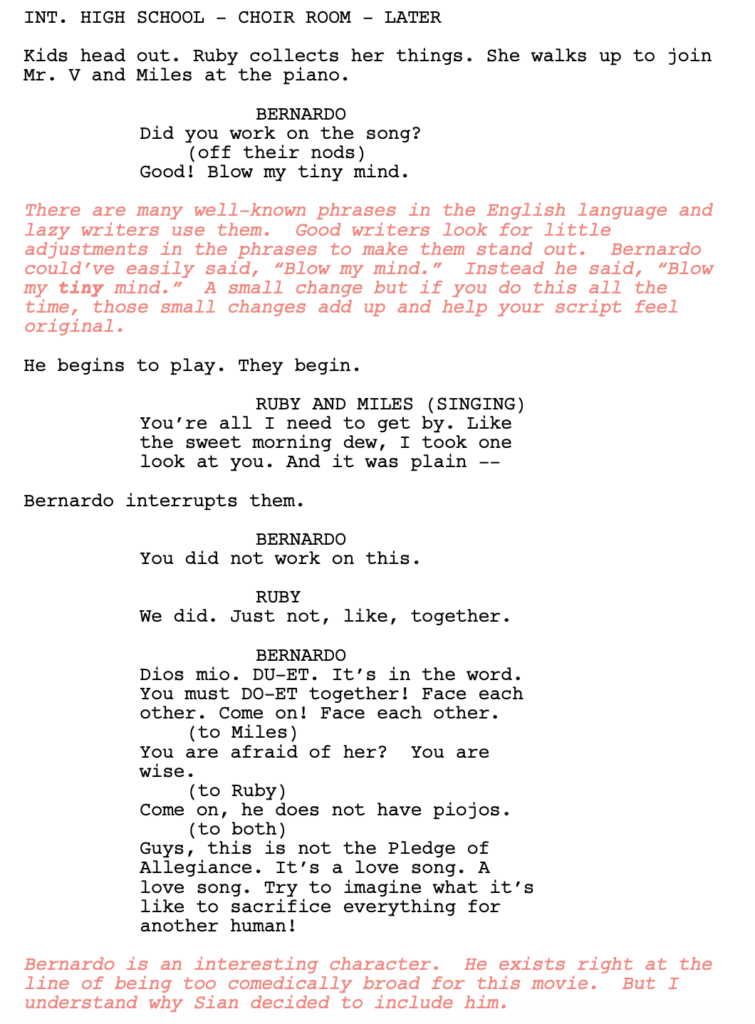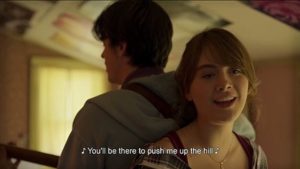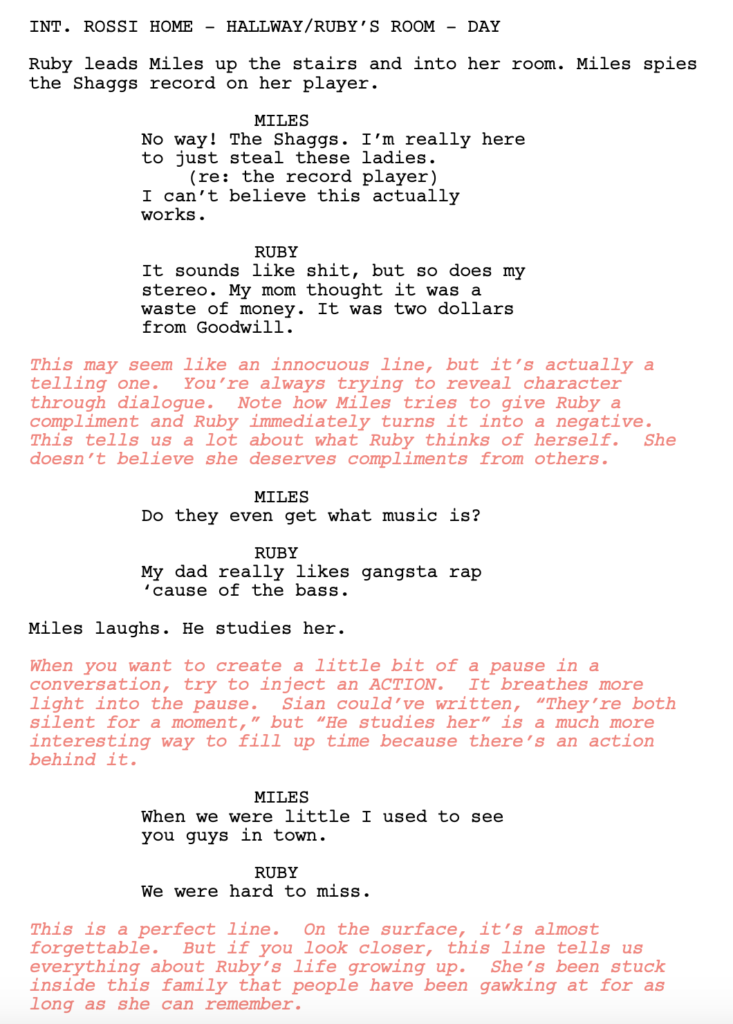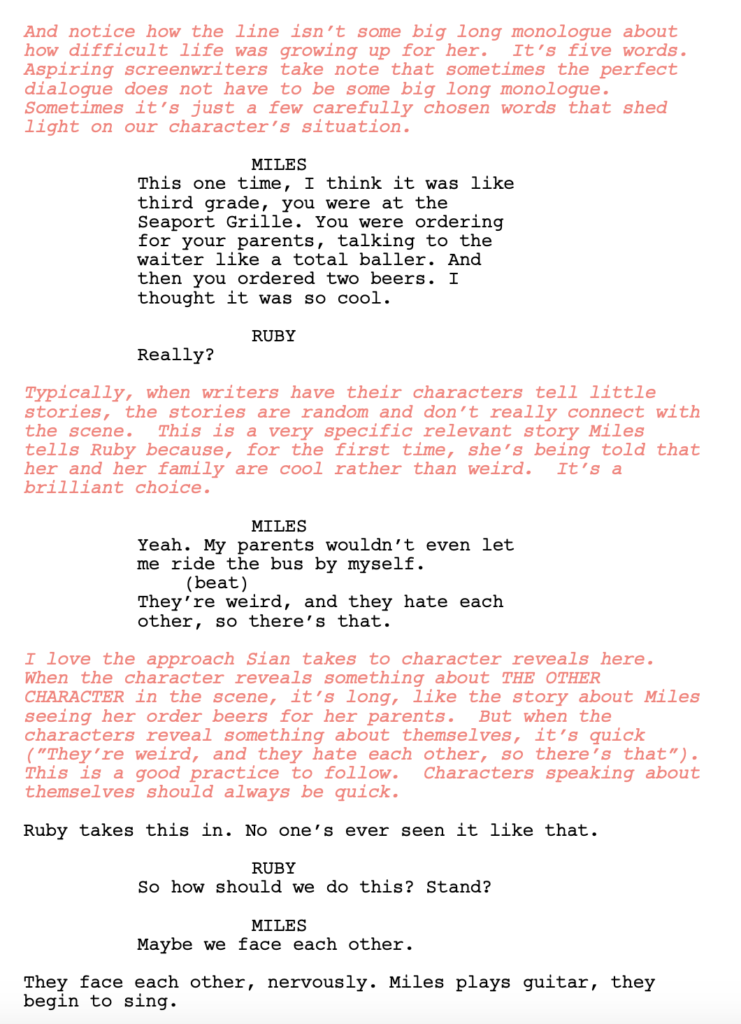A storyline that got overlooked at the Oscars due to Slapgate was that Apple, not Netflix, took home the first ever Best Picture Oscar for a streaming service! You cannot begin to comprehend how angry this makes Reed Hastings, who has invested truckloads of money coveting high profile directors like Alfonso Cuarón and David Fincher, in hopes of winning that golden statue and legitimizing Netflix. I can only imagine how angry he is that streaming whipping boy, Apple, won their version of the space race.
I loved Sian Heder’s, Coda, and thought it was the perfect time to bring back the “scene breakdown” feature I did with “I Care A Lot.” I’m going to highlight two scenes from the award-winning script (which you can download here), and while the focus will be on dialogue, I’ll spotlight a few other screenplay tips as well.
If you haven’t seen Coda, it follows a senior in high school, Ruby, the only hearing member of an, otherwise, deaf family. While you’d think this would make her sympathetic to her parents and brother, it’s the opposite. She’s always been looked at as “the weird girl with the deaf family” and, as a result, felt ostracized.
For the first time ever, Ruby is doing something for herself. She’s always wanted to sing but hasn’t had the confidence to do so. So she’s joined the choir class in high school and the teacher has assigned her to a duet with Miles, a boy she has a crush on. The following scene takes place in their music teacher’s classroom. They were supposed to practice their song together but didn’t.


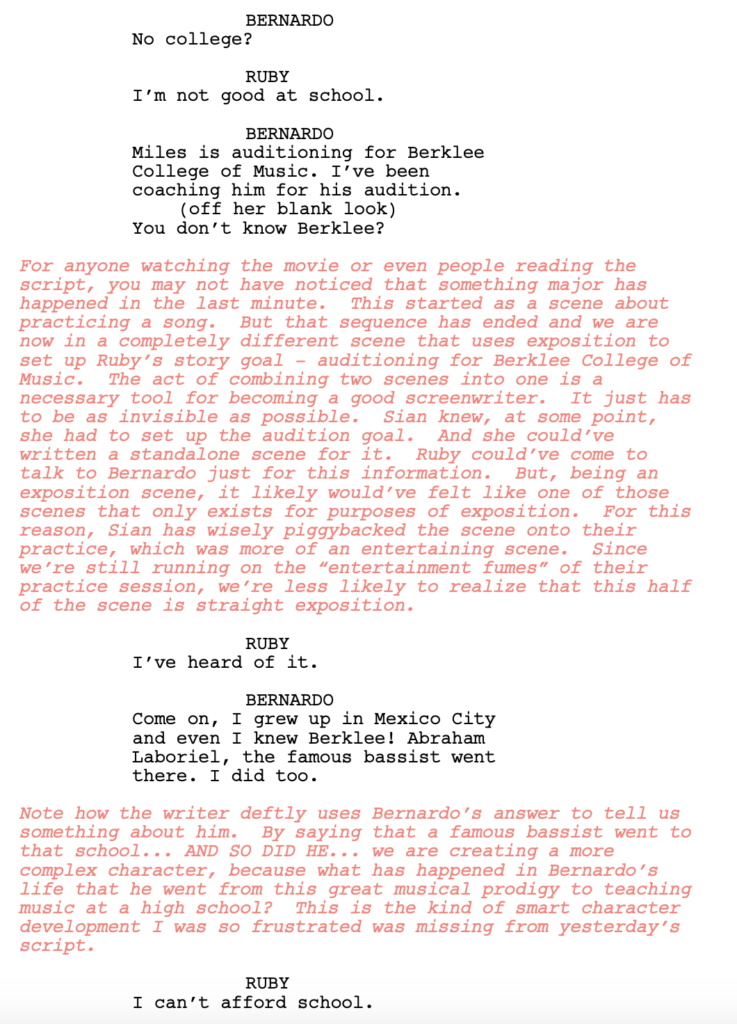
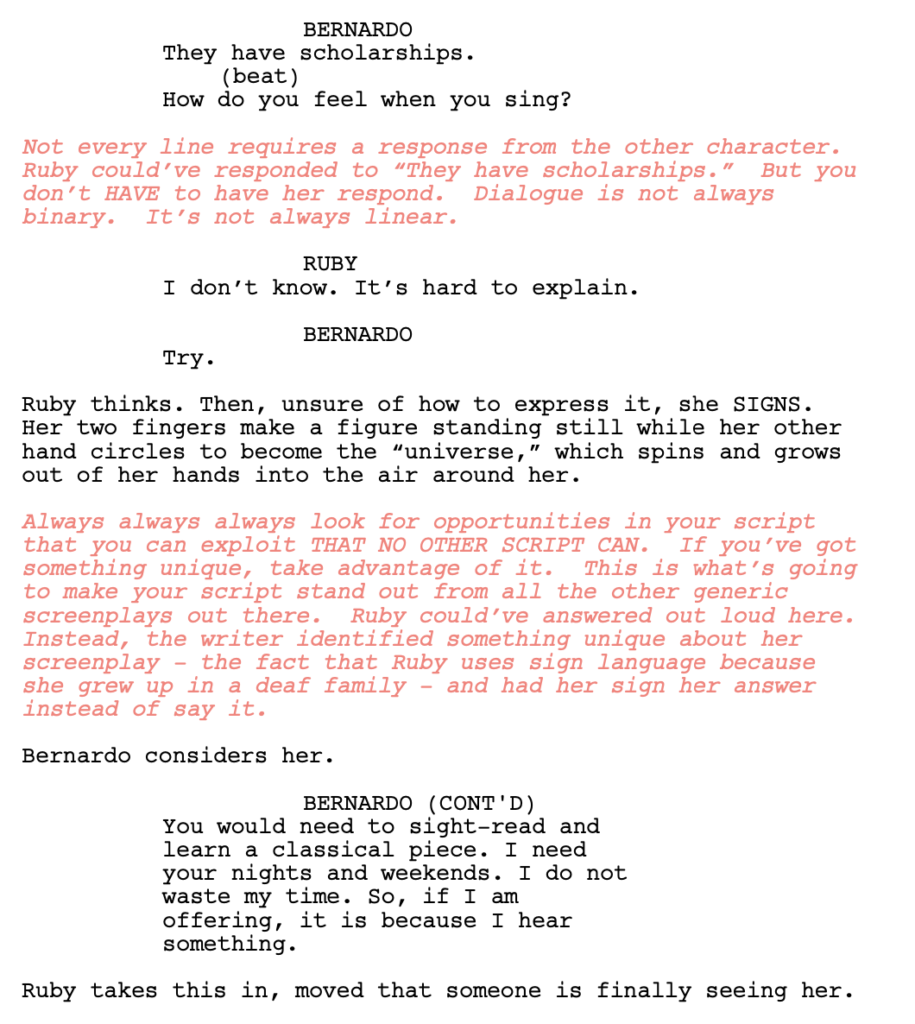
This next scene takes place 10-15 minutes later in the movie. This is the first time Ruby and Miles are practicing together and they’re doing so at Ruby’s house. Ruby is incredibly nervous about this not just because she has a crush on Miles, but because her family is such a wild card. She’s terrified that this may be a dealbreaker. I can’t stress this enough: Put your characters in situations they’re uncomfortable in. And with that established, let’s take a look at the scene…
And that’s it. I strongly recommend you read this script (it’s only 80 pages) AND watch the movie. Share your thoughts in the comments section, especially any additional lessons you picked up from the dialogue.


